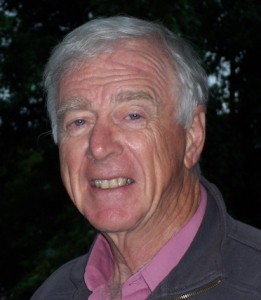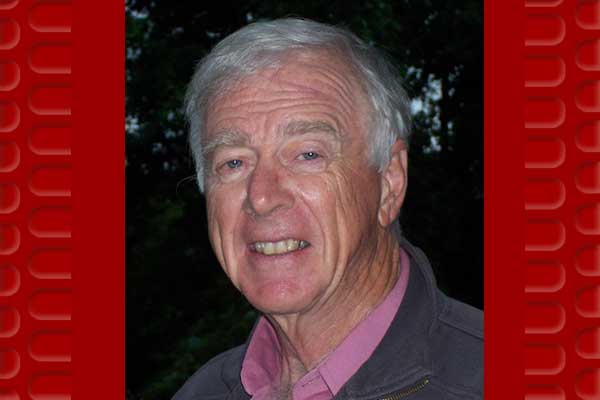Iowa State alumnus Robert Brayton says his engineering education laid a foundation for a “dream job” as a mathematics researcher at IBM when the computer industry was in its infancy.
Brayton graduated from Ames High School in 1951, and it was clear to him then that he would be attending Iowa State’s engineering college. It just took him a while to settle on a discipline.
 “I started in aeronautical engineering and saw immediately that it wasn’t a good fit,” Brayton says, “so I switched to mechanical engineering. Then I took some electrical engineering classes and thought that was even better. I was a double-major for three years. Then I found I really enjoyed mathematics and physics. I picked up additional coursework in those subjects and dropped the mechanical engineering major.”
“I started in aeronautical engineering and saw immediately that it wasn’t a good fit,” Brayton says, “so I switched to mechanical engineering. Then I took some electrical engineering classes and thought that was even better. I was a double-major for three years. Then I found I really enjoyed mathematics and physics. I picked up additional coursework in those subjects and dropped the mechanical engineering major.”
What seemed like a lot of indecision ended up being a solid foundation for his career and academic achievements, Brayton believes.
“All that switching around meant I got a lot of exposure to different disciplines, and that made a big difference in my career,” he says. “I’ve always believed that if you’re doing mathematics without a good understanding of the applications, you’re at the mercy of other people. Knowing the applications means you’re able to understand what the real problems are and find truly relevant solutions.”
Brayton also credits the academic environment of his Iowa State fraternity chapter, Phi Delta Theta, for not only longstanding friendships but also a lifelong standard of excellence. He even collaborated with one fraternity brother, Gordon M. Shepherd, now a professor of neurobiology at Yale School of Medicine, on a study of neural networks.
After Iowa State, Brayton entered MIT to study electrical engineering and computers. He graduated from MIT with a Ph.D. in mathematics instead.
During his time there, he worked as a graduate research assistant in electrical engineering department on a team that developed what would be one of the earliest computer programming languages called LISP.
He also interned for IBM, and later joined the company to work at the Thomas J. Watson Research Center in Yorktown Heights, New York. The now widely respected facility was brand new, just like Brayton’s career in mathematics research.
At the time, IBM was a rising computer manufacturing powerhouse, and Brayton was part of an extensive corporate research program.
“I was doing research that wasn’t necessarily targeted at any one product line. It was pure research, which IBM invested in heavily in those years. The company believed that good things could come out of it in the long term, and since they had a monopoly on large computers at the time, they could afford to support in-house research,” he explains.
“I’ve always said it was the best job you could ever have. I was free to work on the problems of my choice, do research, write and publish papers.”
With that freedom, Brayton and other researchers began in 1966 to develop the numerical methods needed to solve integrated electrical circuit design challenges. His work led to the development of IBM’s Advanced Statistical Analysis Program (ASTAP), an analog electronic circuit simulator that was used by the company for 30 years.
In 1978, he began tackling the challenges of logic synthesis of digital circuits. He developed some of the early methods still influencing the industry today, and is widely known as a leading expert in computer-aided design and electronic design automation.
“Everyone knows that computers are, right down at the nitty-gritty level, zeroes and ones. How you get what you want on a microchip, translated into logic gates of zeroes and ones but optimized so that it’s small and fast—that’s one challenge called logic synthesis,” Brayton explains. “After that, how do you know you got what you wanted and can you prove it, that’s called verification, and another challenge.”
Nearly 10 years later, IBM was offering early retirement. Having spent a year previously at the University of California, Berkeley while on a sabbatical from IBM, Brayton chose to retire to join the Electrical Engineering and Computer Sciences Department in 1987, where he was the Cadence Distinguished Professor of Engineering and the director of the SRC Center of Excellence for Design Sciences.
He was able to integrate his experience at IBM into his work at Berkeley, developing ESPRESSO, a computer program that reduces the complexity of digital electronic circuits. And with other faculty, Brayton developed the first course to be offered in logic synthesis, which he taught for many years.
“Logic synthesis was a hot area, and I had a lot of top notch graduate students. It was a time when there were many good ideas to pursue, and the research just went on and on. It was a very productive time for me in my career.”
During his career, he published 10 books and more than 450 papers. He is a member of the National Academy of Engineering and a fellow of the IEEE. He’s an Iowa State Outstanding Alumnus and a winner of the Anson Marston Medal from Iowa State’s College of Engineering, among other awards. He was recently recognized by the European System Design Show in Grenoble, France, with a tribute to his contributions to computer-aided design and electronic design automation, and he will be a keynote speaker at the Haifa Verification Conference in Israel in November.
